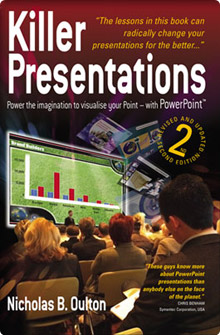
Incumbent vs New Supplier: Should Your Pitch Strategy be Different?
Several people have asked me lately which is more difficult – developing a wining pitch presentation for the incumbent already delivering the service, or for the competition attempting to unseat them. As with all things, there is both a short and a long answer.
In Short, No.
There should be an advantage to being in place already, but in reality there is no difference. We have completed 36 sales presentations over the last 2 years with a win rate of 78%. The ones lost are split fairly evenly between incumbent and competition. So I would say that your chances of winning with us are at least 2 out of 3 regardless of whether you are rebidding for existing business or pitching for new work.
It should make a difference; there are real advantages to being the incumbent but in my experience organisations rarely capitalize on this advantage.
Clearly, as we are developing the pitch strategy for a client we are keen to know:
- Who currently deliver’s the services?
- How is the current performance?
- How are the relationships?
- Why is the contract out for renewal?
Since these answers help us paint a picture of the prospect’s drivers.
For example, a company has been providing the scope of services for 39 years to their client, who is extremely happy with the service. But, it is a public intuition in New England and they have to prove to the ‘Public’ that they are paying market value for the services. If I were advising my client’s competition I would tell them to NO Bid as it’s a blatant price comparison exercise and the client has no real desire to change. If an new bidder comes in at a better price or a new service offering it is extremely likely that the organisation will feel obliged to offer the deal to my client on the condition the new price or service is delivered.
The first rule of thumb is to understand the prospect’s attitude to change. We have won deals where the incumbent has been underperforming by promising ‘change with out the risk of transition’ equally we have won deals as a new business pitch by promising ‘transition is the only route to real change’.
Ultimately it comes down to your ability to present an argument, the advantage we give clients is that their arguments resound clearer with our help and so they win more often. Give me the underdog with a good pitch presentation than the top player with bullet points any day!
The Long Answer: It Should!
Where the real advantage lies is in the ability to find compelling proof for the value proposition if you are the incumbent. We once helped a client win a hospital construction project by spending a day on-site surveying staff and using the information to argue that our solution was better based on this “research”.
For a decision maker struggling with a difficult choice between two equally good candidates, the one that provides relevant, research-based proof points is likely to win. It’s tough to ignore stats, quotes or video evidence that document your stakeholders wanting something and very compelling that the candidate took the time to listen.
I am working on a deal for the same client as above, we are 12 months out from a ‘potential RFP’ but we are agreeing on the value proposition now and building a series of interactions to uncover proof that they can deliver it. By the time we get to the pitch, we should have already won the deal…
It is straight out of Sun Tzu:
“Victorious warriors win first and then go to war, while defeated warriors go to war first and then seek to win”
Which in reality, is the reason that this isn’t reflected in the stats, that a good job thinking through the value proposition – a year out – ends up with clients avoiding a formal RFP process and not actually having to re-bid. Which, with hindsight, is good for them but really isn’t good for business for me! fewer presentations to coach!
